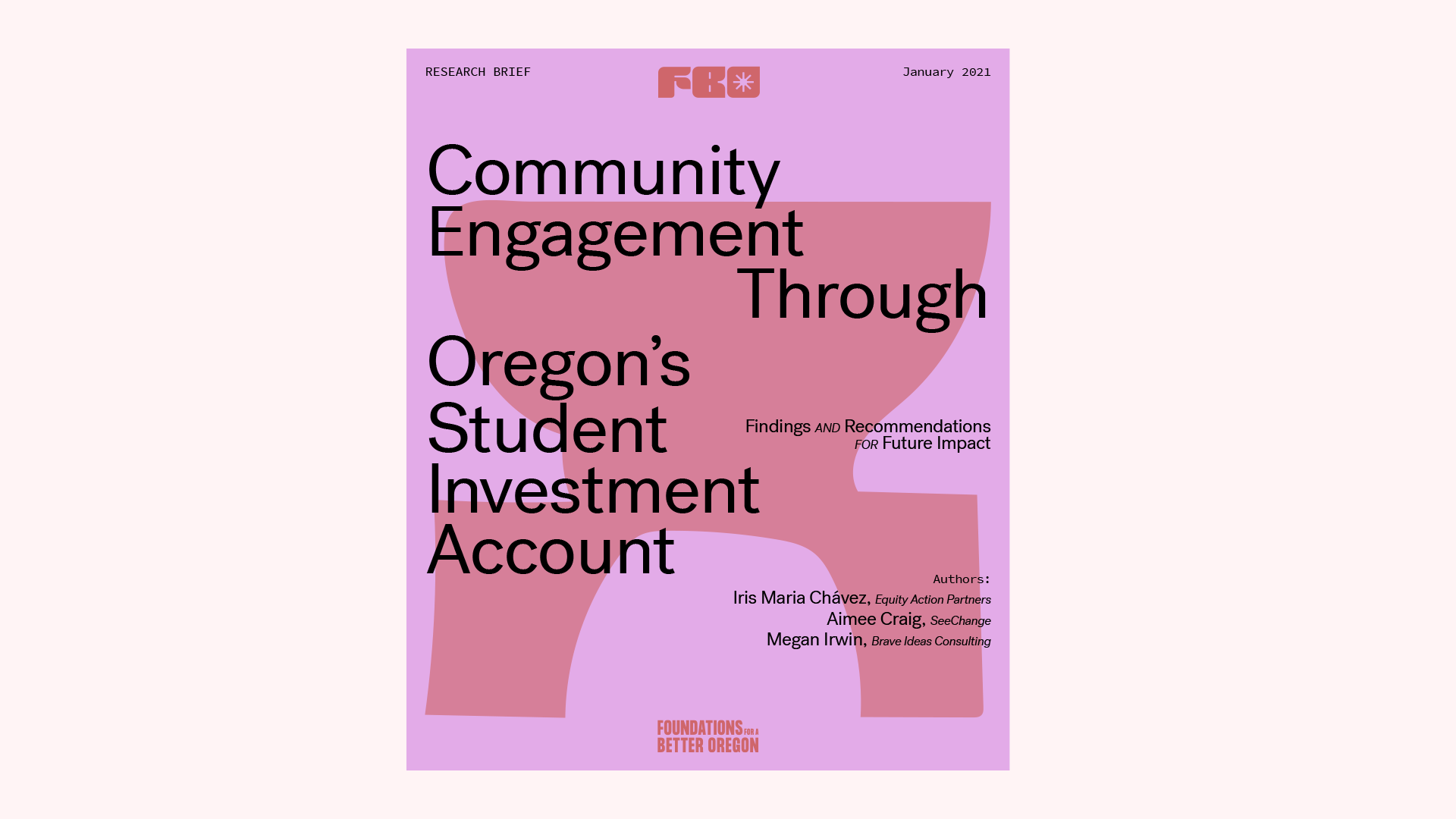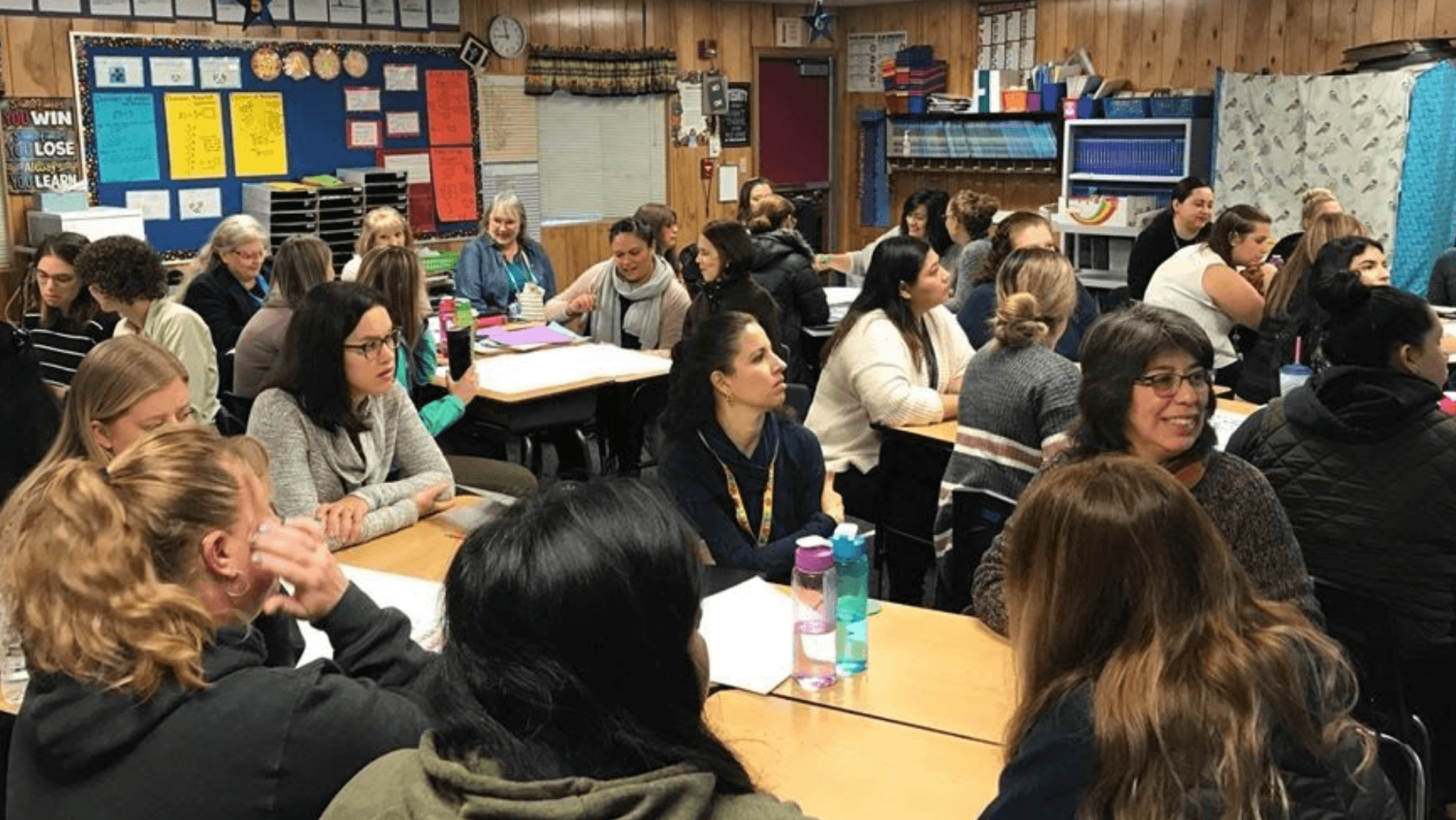With research collaboratively conducted by Iris Maria Chávez, Aimee Craig, and Megan Irwin, the project investigated how community engagement was interpreted and applied in the SIA’s implementation. The findings and recommendations, now publicly available, were first previewed to state legislators and community leaders at FBO’s 2021 Legislative Summit.
“The Student Investment Account has shown us that community engagement is not something that’s just ‘nice to do,’ nor is it a one-time or some-time activity,” said Irwin at the Summit. “It’s a core strategy for harnessing the knowledge and the power and commitment that we need to improve student outcomes.”
To receive SIA funds, school districts must engage students, families, and their communities as they design plans and budgets that address disparities experienced by historically underserved students. The focal populations named in the law include Black students, Indigenous students, students of color, students with disabilities, emerging bilingual students, and students navigating poverty, homelessness, or foster care.
What did community engagement look like during the first year of the SIA? For some, tight timelines and COVID-19 disruptions led to a rushed process, turning community engagement into a ‘check-the-box’ activity to qualify for SIA funds. Others took the opportunity to go beyond a simple survey or listening session, creating engagement opportunities that included community voices at the policymaking table in new, authentic, and meaningful ways.
Among its findings, the research brief reinforces that authentic community engagement is based in trust and built over time. The SIA is an opportunity for school and community leaders to grow deeper relationships, learn from each other, and make better decisions together. The analysis also found that when policies and investments are designed with—and not for—impacted communities, they are more likely to succeed.


